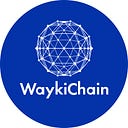WaykiChain Ecosystem’s Future: WGRT as the Dual Engine of Governance and Assets

Decentralized Finance (DeFi) has emerged as a star in the blockchain industry, with decentralized lending as one of its core applications. Since the advent of DeFi, its user base and collateral asset scale have been continuously growing. Such growth has also resulted in community debates and disagreements on aspects like development direction, types of collateral assets, and stable interest rates.
In this context, employing a scientific and objective governance mechanism, which allows users to suggest, propose, and vote, becomes the most effective way to maximize problem-solving and enhance the efficiency and quality of community decisions.
As a veteran technology team in the blockchain industry, the WaykiChain team has actively explored user governance and has introduced WGRT, the governance and equity token for WaykiChain’s decentralized lending platform.
WGRT, standing for WaykiChain, Governance, Right, and Treasure, clearly outlines the rights and wealth granted to users through governance. WGRT affords users both the rights and responsibilities to participate in stablecoin governance, primarily manifested in proposal and voting rights. Any governance participant fulfilling system rules can initiate a proposal, which will then be voted on by all WGRT users. In other words, the entire DeFi system’s governance is a collective effort by WGRT users.
Beyond governance, WGRT, backed by real value, also confers financial wealth upon users. When the stablecoin system operates well, the interest generated from collateralizing WUSD and the penalties from liquidating Collateralized Debt Positions (CDPs) are used to repurchase and burn WGRT tokens in the market (decentralized exchanges). Therefore, in the long run, WGRT will continuously undergo deflation.

These ecological values that WGRT can bring are fundamentally based on its innate ecosystem advantages.
Technically, WGRT is built directly on the WaykiChain public chain, inheriting the security and high performance of the underlying chain. Specifically, WGRT benefits from WaykiChain’s average transaction speed of 4500 TPS, significantly enhancing DeFi’s operational efficiency.
Economically, the trinity token model offers WGRT its innovative features. With this model, WGRT, along with the public chain asset WICC and stablecoin WUSD, forms a virtuous cycle, allowing WGRT holders to continuously reap massive dividends from WaykiChain’s innovative DeFi ecosystem.
In terms of risk emergency mechanisms, WGRT includes multiple insurance measures like regular liquidation, risk reserve funds, and circuit breaker protections, fundamentally mitigating extreme market impacts on user assets.
Given this unique ecological positioning, we foresee that as the overseas development strategy unfolds, the importance of WGRT as a governance token will not only become increasingly prominent but will also serve as the key driver in amplifying WaykiChain’s global impact. It heralds a broader, more mature stage of development soon to be unveiled.
